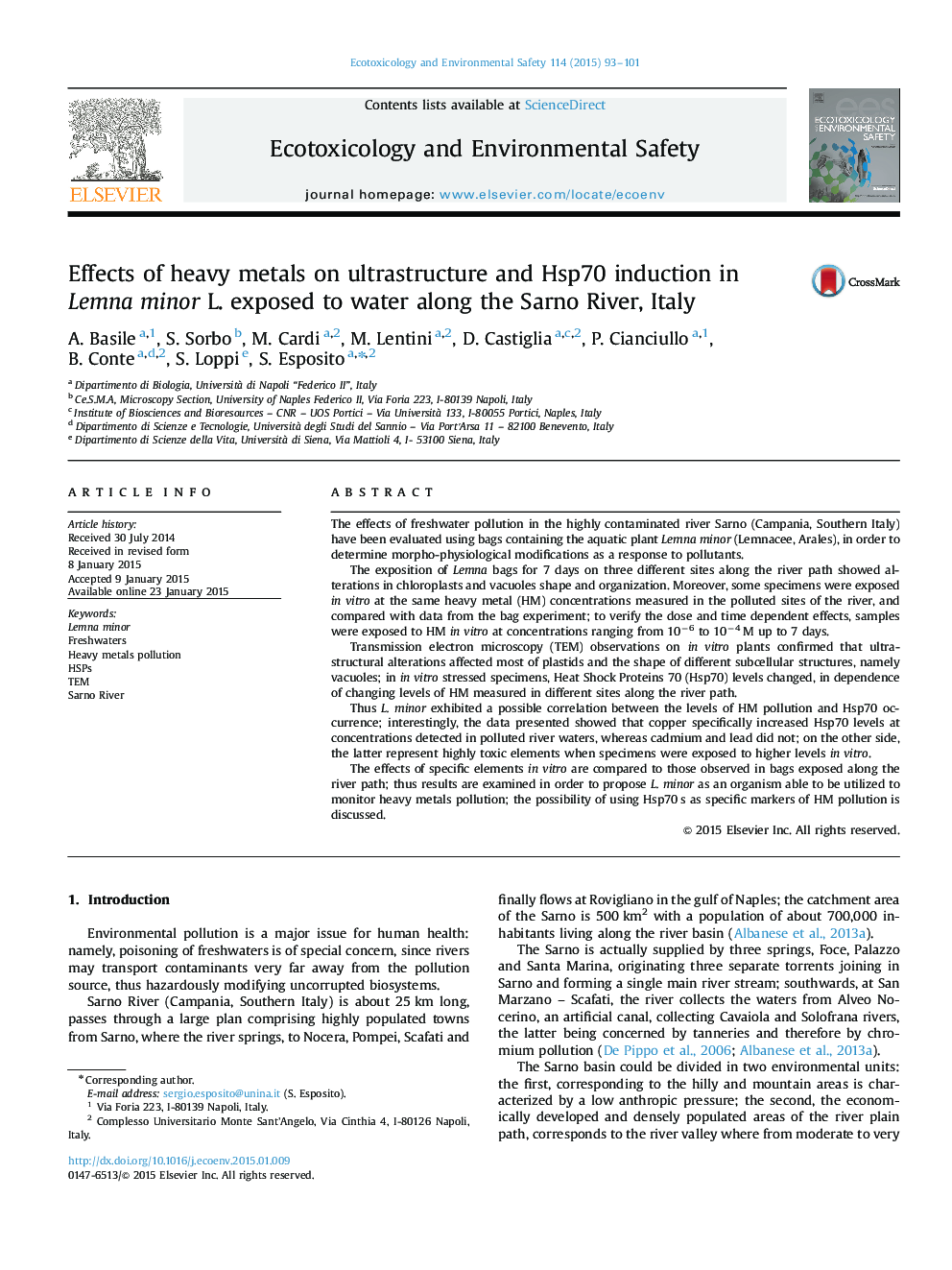| Article ID | Journal | Published Year | Pages | File Type |
|---|---|---|---|---|
| 4419809 | Ecotoxicology and Environmental Safety | 2015 | 9 Pages |
•L. minor were exposed in bags at 3 sites along the Sarno river (Italy).•The ultrastructural damages observed in field studies were compared to those caused in vitro by heavy metals.•Cd and Pb were the most toxic to Lemna.•Cu, at the levels measured in waters increased Hsp70 in Lemna.
The effects of freshwater pollution in the highly contaminated river Sarno (Campania, Southern Italy) have been evaluated using bags containing the aquatic plant Lemna minor (Lemnacee, Arales), in order to determine morpho-physiological modifications as a response to pollutants.The exposition of Lemna bags for 7 days on three different sites along the river path showed alterations in chloroplasts and vacuoles shape and organization. Moreover, some specimens were exposed in vitro at the same heavy metal (HM) concentrations measured in the polluted sites of the river, and compared with data from the bag experiment; to verify the dose and time dependent effects, samples were exposed to HM in vitro at concentrations ranging from 10−6 to 10−4 M up to 7 days.Transmission electron microscopy (TEM) observations on in vitro plants confirmed that ultrastructural alterations affected most of plastids and the shape of different subcellular structures, namely vacuoles; in in vitro stressed specimens, Heat Shock Proteins 70 (Hsp70) levels changed, in dependence of changing levels of HM measured in different sites along the river path.Thus L. minor exhibited a possible correlation between the levels of HM pollution and Hsp70 occurrence; interestingly, the data presented showed that copper specifically increased Hsp70 levels at concentrations detected in polluted river waters, whereas cadmium and lead did not; on the other side, the latter represent highly toxic elements when specimens were exposed to higher levels in vitro.The effects of specific elements in vitro are compared to those observed in bags exposed along the river path; thus results are examined in order to propose L. minor as an organism able to be utilized to monitor heavy metals pollution; the possibility of using Hsp70 s as specific markers of HM pollution is discussed.
